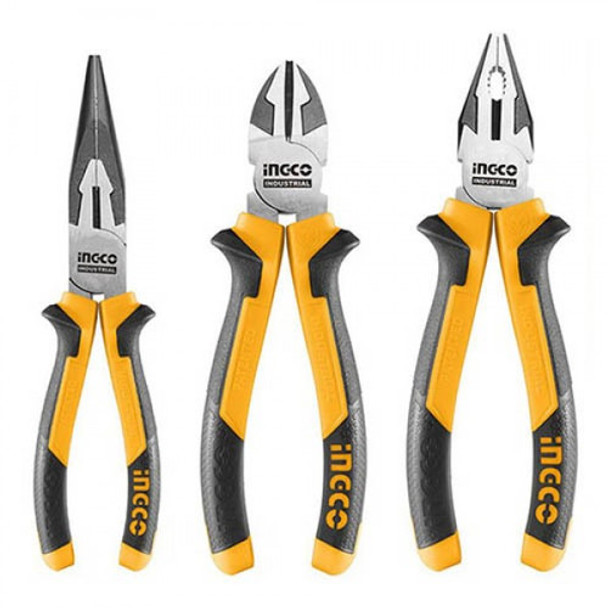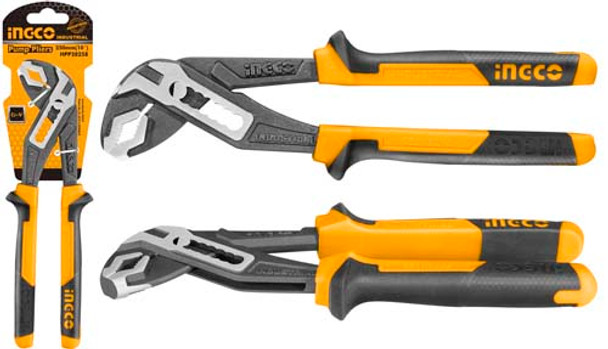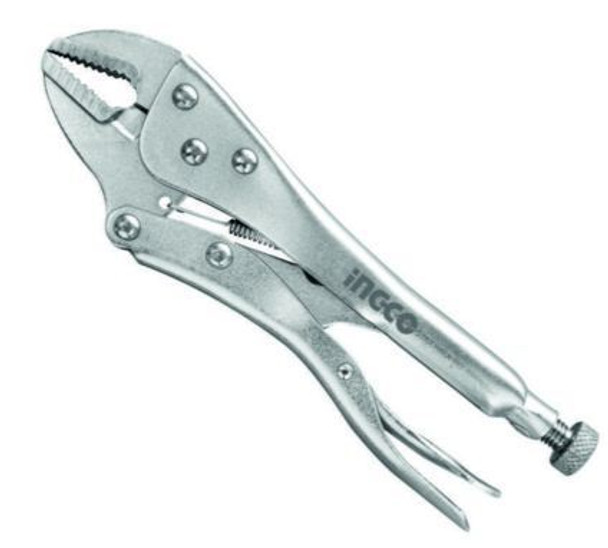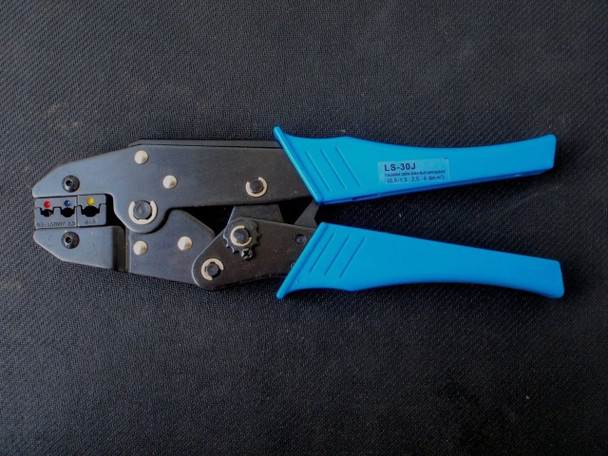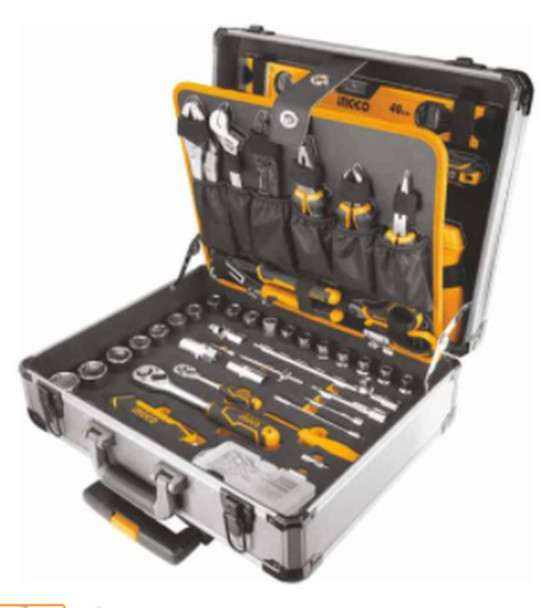Essential Electrical Pliers for Every Toolbox: Top Picks and How to Use Them
Key Takeaway
- Versatile Tool: Electrical pliers are essential for tasks like cutting, twisting, and stripping wires, making them indispensable for electricians, DIY enthusiasts, and homeowners.
- Top Picks: Key types of pliers include needle-nose pliers for precision work, diagonal cutting pliers for cutting wires, linesman pliers for gripping and twisting wires, and crimping pliers for securing connectors.
- Ergonomic Design: Choose pliers with comfortable, non-slip grips to reduce hand fatigue and improve safety during electrical work.
Introduction
Electrical pliers are essential electrical tools for anyone working with electrical systems, from professionals to DIY enthusiasts. Electrical pliers are a must-have in every toolbox, offering versatility for various tasks like cutting, stripping, twisting, and crimping wires.
Top picks include needle-nose pliers for precise work in tight spaces, linesman pliers for gripping and twisting wires, diagonal cutting pliers for clean wire cuts, and crimping pliers for securely attaching connectors. Each of these pliers serves a specific purpose in electrical work, making them indispensable for both professionals and DIYers.
When choosing electrical pliers, it’s important to select ones with insulated handles for safety, ergonomic designs for comfort, and durable materials like high-carbon steel for longevity. Using the right pliers for the task not only ensures efficiency but also increases safety when handling electrical components.
In this guide, we'll explore the essential types of electrical pliers, highlight top picks in each category, and provide practical tips on how to use them effectively.
3Pcs Pliers Set INGCO HKPS28318
Types of Electrical Pliers
1. Needle-Nose Pliers
Needle-nose pliers are characterized by their long, tapered jaws that allow for precise gripping and manipulation of small objects. These pliers are particularly useful for reaching into tight spaces and working with delicate components.
Key Features:
1. Long, pointed jaws
2. Slip-resistant grips
3. Precision tips
Common Uses:
1. Bending and shaping wire
2. Holding small components in place
3. Reaching into confined spaces
2. Diagonal Cutters
Diagonal cutters, also known as diagonal pliers or wire cutters, are designed for cutting wire and cable. They feature a pair of sharp, angled blades that make clean cuts without crushing the wire.
Key Features:
1. Sharp, angled cutting edges
2. Comfortable handles
3. Robust construction for durable cutting
Applications:
1. Cutting electrical wires and cables
2. Trimming excess wire
3. Removing wire from connectors
3. Lineman’s Pliers
Lineman’s pliers are heavy-duty tools designed for gripping, twisting, and cutting. They have a strong, gripping surface and a robust build, making them suitable for a wide range of tasks.
Key Features:
1. Serrated gripping surface
2. Robust, high-leverage design
3. Integrated cutting edges
Uses:
1. Twisting and cutting wire
2. Gripping and holding objects
3. Bending and shaping metal
Pump Pliers 10'' INGCO HPP28258
4. Combination Pliers
Combination pliers combine the features of needle-nose and lineman’s pliers, offering versatility in a single tool. They can grip, twist, cut, and bend, making them a valuable addition to any toolbox.
Key Features:
1. Multi-function design
2. Combination of gripping and cutting capabilities
3. Ergonomic handles
Applications:
1. General-purpose electrical tasks
2. Gripping and manipulating various materials
3. Cutting and twisting wires
5. Crimping Pliers
Crimping pliers are used to attach connectors to wires by deforming the connector into a secure fit. They are essential for creating reliable electrical connections.
Key Features:
1. Multiple crimping dies
2. Precision crimping action
3. Ergonomic handles for comfort
Importance:
1. Ensures secure electrical connections
2. Prevents loose or unreliable connections
3. Suitable for various connector types
6. Wire Strippers
Wire strippers are designed to remove insulation from electrical wires without damaging the wire itself. They come with adjustable blades for different wire sizes.
Key Features:
1. Adjustable cutting blades
2. Multiple wire gauge settings
3. Built-in wire cutters
Applications:
1. Stripping insulation from wires
2. Cutting and trimming wire
3. Preparing wires for connections
Straight Jaw Plier INGCO HSJP0110
Top Picks for Electrical Pliers
1. Best Needle-Nose Pliers
Recommended Models:
1. Klein Tools 11" Needle-Nose Pliers: Known for their precision and durability, these pliers feature induction-hardened cutting edges and a slim profile for reaching into tight spaces.
2. Irwin Vise-Grip Long Nose Pliers: These offer a comfortable grip and fine tips for detailed work.
Features to Look For:
1. Precision tips for accuracy
2. Strong, slip-resistant grips
3. Durable construction
2. Best Diagonal Cutters
Recommended Models:
1. Klein Tools High-Leverage Diagonal Cutters: These cutters provide excellent cutting power with a high-leverage design and precision ground blades.
2. Channellock 7" Diagonal Cutting Pliers: Known for their cutting performance and long-lasting sharpness.
Features to Look For:
1. Sharp, angled blades for clean cuts
2. High-leverage design for reduced effort
3. Comfortable, ergonomic handles
3. Best Lineman’s Pliers
Recommended Models:
1. Klein Tools Lineman's Pliers: These feature a heavy-duty design with a gripping surface and high-leverage cutting capability.
2. Channellock 9.5" Lineman's Pliers: Known for their strength and reliability in gripping and cutting tasks.
Features to Look For:
Serrated gripping surfaces
High-leverage design for powerful cuts
Robust construction
4. Best Combination Pliers
Recommended Models:
1. Klein Tools Combination Pliers: Versatile and durable, these pliers offer a blend of gripping, twisting, and cutting capabilities.
2. Irwin Vise-Grip Combination Pliers: Known for their multi-functionality and comfortable grip.
Features to Look For:
Versatile design for multiple tasks
Integrated cutting and gripping capabilities
Comfortable, ergonomic handles
5. Best Crimping Pliers
Recommended Models:
1. Klein Tools Crimping Pliers: These pliers come with precision crimping dies and offer reliability for a wide range of connectors.
2. IRWIN Vise-Grip Crimping Tool: Known for its ease of use and effective crimping performance.
Features to Look For:
1. Multiple crimping dies for different connectors
2. Precision crimping action
3. Comfortable, ergonomic handles
6. Best Wire Strippers
Recommended Models:
1. Klein Tools Wire Stripper/Cutter: This tool offers multiple wire gauge settings and built-in cutting capabilities for convenience.
2. IRWIN Vise-Grip Wire Strippers: Known for their precision and ease of use in stripping insulation.
Features to Look For:
1. Adjustable blades for different wire sizes
2. Built-in cutting and stripping capabilities
3. Ergonomic design for comfortable handling
Insulated Ratcheting crimp tool plier crimper 22-10 AWG
How to Use Electrical Pliers Effectively
1. Needle-Nose Pliers
Techniques for Precision Work and Tight Spaces:
1. Use the fine tips to grip and manipulate small components or wires.
2. Apply gentle pressure to avoid damaging delicate parts.
3. Use the pliers to bend or shape wire in tight areas where larger tools may not fit.
2. Diagonal Cutters
Best Practices for Cutting Wires and Cables Cleanly:
1. Position the wire at the cutting edge of the pliers for a clean cut.
2. Avoid cutting too close to connectors or terminals to prevent damage.
3. Use the pliers with steady, controlled pressure to achieve a clean cut without crushing the wire.
3. Lineman’s Pliers
Techniques for Gripping and Twisting Wires:
1. Use the serrated gripping surface to hold and twist wires securely.
2. Apply firm pressure when twisting to ensure a tight and reliable connection.
3. Use the cutting edges to trim excess wire after twisting.
4. Combination Pliers
Multi-Use Applications and Tips for Efficiency:
1. Use the gripping surfaces for various tasks such as holding, bending, and twisting.
2. Utilize the cutting edges for trimming wire or cable as needed.
3. Employ the pliers for a range of tasks to minimize tool changes and increase efficiency.
5. Crimping Pliers
Proper Use for Crimping Connectors and Terminals:
1. Insert the connector into the appropriate crimping die.
2. Apply firm, even pressure to crimp the connector securely onto the wire.
3. Check the crimp for a tight and secure fit to ensure a reliable electrical connection.
6. Wire Strippers
Techniques for Safe and Accurate Insulation Removal:
1. Adjust the stripper to the appropriate wire gauge setting.
2. Position the wire in the stripper and gently squeeze to remove the insulation without damaging the wire.
3. Avoid over-stripping or nicking the wire, which can affect performance.
Maintenance and Care for Electrical Pliers
1. Cleaning and Lubrication
How to Clean and Lubricate Pliers for Longevity:
1. Regularly wipe the pliers with a clean, dry cloth to remove dirt, dust, and debris.
2. For stubborn residues, use a mild detergent solution and a soft brush, then dry thoroughly.
3. Apply a light coat of oil or lubricant to the pivot points and joints to ensure smooth operation and prevent rust.
2. Sharpening and Calibration
Maintaining Sharpness and Proper Calibration:
1. For pliers with cutting edges, periodically sharpen them using a suitable sharpening tool to maintain their effectiveness.
2. Ensure that the jaws of the pliers align properly and that there are no gaps or misalignments that could affect performance.
3. Test the pliers on a small sample of wire or material to ensure they are cutting or gripping effectively.
3. Storage Tips
Best Practices for Storing Pliers to Avoid Damage:
1. Store pliers in a dry, clean environment to prevent rust and corrosion.
2. Keep them in a tool box or pouch to avoid physical damage and maintain organization.
3. Avoid placing pliers in direct contact with chemicals or extreme temperatures that could degrade their materials.
147pcs Tools Set
Buying Guide: How to Choose the Right Electrical Pliers
1. Assessing Quality and Durability
What to Look For in High-Quality Pliers:
1. Check for sturdy construction with high-quality materials such as hardened steel or chrome-vanadium alloy.
2. Look for tools with ergonomic handles designed for comfort and reduced hand strain.
3. Consider tools from reputable brands known for their reliability and durability.
2. Choosing the Right Size and Type
Matching Pliers to Your Specific Needs:
1. Select pliers based on the specific tasks you perform most frequently (e.g., cutting, gripping, crimping).
2. Choose the size of pliers that fits comfortably in your hand and provides adequate leverage for the tasks at hand.
3. Ensure that the type of pliers you select is suitable for the materials and wire sizes you work with.
3. Considering Ergonomics and Comfort
Features for Reducing Hand Strain and Improving Usability:
1. Look for pliers with padded or cushioned grips to enhance comfort during extended use.
2. Opt for tools with a balanced design that reduces hand fatigue and provides better control.
3. Consider the weight and balance of the pliers to ensure they are easy to handle and use.
4. Comparing Brands and Prices
Evaluating Different Brands and Price Points:
1. Compare pliers from various brands to assess their features, build quality, and warranty options.
2. Evaluate the price relative to the features and durability of the pliers to ensure you are getting good value for your money.
3. Consider reading customer reviews and seeking recommendations from professionals to make an informed decision.
Frequently Asked Questions
1. What are the most common types of electrical pliers used by professionals?
Professionals commonly use needle-nose pliers, diagonal cutters, lineman’s pliers, combination pliers, crimping pliers, and wire strippers. Each type serves a specific function, such as cutting, gripping, or crimping.
2. How can I tell if my electrical pliers are of good quality?
High-quality pliers will have sturdy construction, sharp cutting edges, and comfortable grips. Look for reputable brands, check for durable materials, and ensure the pliers are well-aligned and functional.
3. Are there any specific safety precautions I should follow when using electrical pliers?
Always use the right type of pliers for the task to prevent damage or injury. Ensure that the pliers are in good condition, avoid using excessive force, and wear protective gear if working with live wires.
4. How often should I maintain and replace my electrical pliers?
Regular maintenance includes cleaning and lubricating pliers to keep them in good condition. Replace pliers when they become worn out, damaged, or less effective in performing their intended tasks.
5. Can electrical pliers be used for tasks other than electrical work?
Yes, electrical pliers can be used for a variety of tasks beyond electrical work, such as general DIY projects, automotive repairs, and crafting. However, ensure they are suitable for the specific materials and tasks to avoid damage.
Related Articles
Electrical materials and accessories supplier in Nigeria
Essential Tool Kits Every Technician Should Own in Nigeria
Conclusion
Electrical pliers are fundamental tools for anyone involved in electrical work, offering essential functions like cutting, gripping, and crimping. By understanding the different types of pliers, their uses, and how to maintain them, you can ensure you have the right tools for the job and keep them in top condition.
For a comprehensive selection of electrical tools, including high-quality pliers, visit Tikweld Product and Services. Explore our range of products and find the best tools for your electrical projects today!
Ready to upgrade your toolbox with high-quality electrical pliers? Explore our range of top-rated pliers and other essential tools at Tikweld Product and Services. Whether you're a professional or a DIY enthusiast, we have the right tools to help you get the job done right. Shop now and experience the difference in quality and performance!


